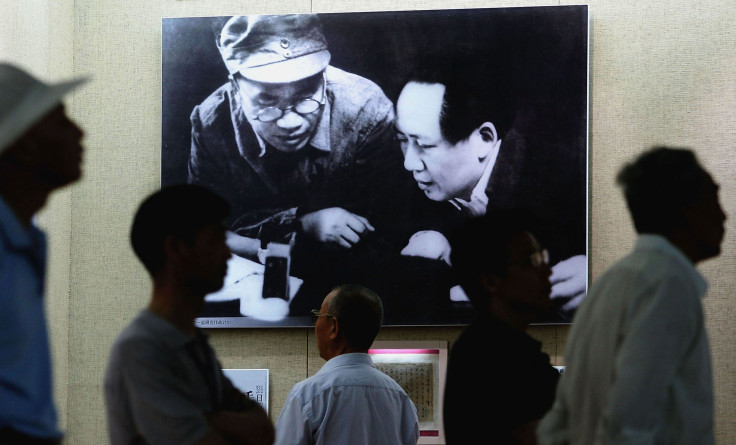China 'Auschwitz' Concentration Camp Outside Beijing Turned Into Memorial Decades After Being Forgotten

About 300 miles southwest of Beijing is a newly dedicated memorial to tens of thousands of Chinese the Japanese are said to have massacred during World War II. It was a killing spree that was long forgotten, or deliberately swept under the rug -- until now. Ruins of the internment camp in Taiyuan are being rebuilt into a memorial, along with numerous other sites commemorating Japan's surrender and the end of World War II in 1945.
As many as 100,00o Chinese, both civilians and soldiers, were imprisoned in the camp by the Japanese. There, they died from starvation, illness, abuse and overwork. Japanese soldiers stabbed others to death with their bayonets, raped women or practiced shooting them, and tested biological weapons on still more prisoners, said Liu Linsheng, author of a book, "China's Auschwitz," the Guardian reported.
The camp opened in 1938 and shut in 1945. The following decade, many of the buildings were bulldozed. Today, two rows of cells remain and are being restored into an educational center -- one of many other new exhibits, monuments and memorials dedicated to atrocities carried out during the Japanese invasion of and subsequent war with China that began in 1931, with the invasion of Manchuria, and which by 1937 had blossomed into a full-fledged war of horrors carried out by both sides.
"‘The Japanese kept me in jail for seven months while the Communist party kept me in jail for seven years" #VDay http://t.co/Bp2bL8IyRI
— Alessandra Colarizi (@AleColarizi) September 1, 2015Perhaps the most infamous atrocity from that war was the Rape of Nanking, which lasted from December 1937 to March 1938. Japanese troops captured the city, now spelled Nanjing, and killed 250,000 to 300,000 people, the majority of whom were women and children, and raped an estimated 80,000 women. It was the landmark book "The Rape of Nanking: The Forgotten Holocaust of World War II" that in 1997 broke the silence that had enveloped the event for decades.
Another notorious site of Japanese brutality in China was Unit 731 in the northern province of Heilongjiang in what used to be Japanese-occupied Manchuria. There, Japanese soldiers experimented with biological warfare, testing viruses on Chinese prisoners, dissecting people alive, freezing them and subjecting them to other horrifyingly gruesome tests.
What happened in Taiyuan is less clear, with little scholarship on the subject, and even the fact that a camp once existed there has faded from public memory.
“Many people don’t even know that this place exists,” Zhao Ameng, whose father escaped the camp, told the Guardian.
© Copyright IBTimes 2024. All rights reserved.






















